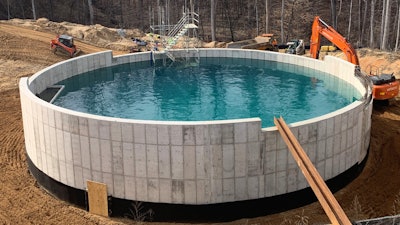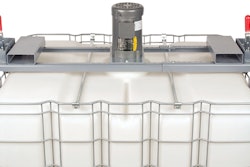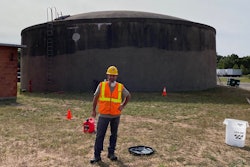
Every drop of water stored in our country's reservoirs, water treatment plants, and behind dams is vital to the well-being of the population they serve and the local economy. This mission is even more crucial given that increasingly severe drought conditions have led to significant water loss in many parts of the U.S.
As for our country's water treatment and wastewater treatment systems, communities need to be secure, knowing that none of the health-threatening stew in these wastewater facilities makes it into local groundwater or nearby waterways. Likewise, we must be confident that contaminants do not enter the clean water stored in our water treatment facilities.
These sites play a substantial role in the life of this country. According to the Cyber Security and Infrastructure Security Agency, the U.S. has approximately 153,000 public drinking water systems and more than 16,000 publicly owned wastewater treatment systems.
More than 80% of the U.S. population receives potable water from water treatment systems, and about 75% has sanitary sewerage treated by these wastewater systems. Many of these facilities have been operating for decades and require upgrades or replacement. Other parts of the country are experiencing population growth that will prompt constructing new facilities or expanding existing plants.
All these containment applications rely on concrete structures to keep water in its place, whether fresh or fetid. One of the leading threats to these structures is concrete shrinkage in the walls which can lead to cracks, enabling water to escape or contaminants to leech into the environment. There are many methods for mitigating this condition, but magnesium oxide admixtures are one of the most effective ways to minimize or prevent the formation of these cracks.
The long-time recognition of the deficiencies in this country's water storage systems has led to the passage of the 2022 Bi-Partisan Infrastructure bill, which will enable more water treatment facilities and dams to deliver clean, reliable drinking water. This bill is the most recent allocation to improving American water containment sites, concentrating on drought resilience in the western states. Additional legislation joining this long overdue bill includes the 2022 Inflation Reduction Act, which allocates $550 billion to cover water project planning and construction.
The challenges for utilities are that new water/wastewater structures can face difficulties passing the required leak test and may require other expensive remedial work. These additional considerations increase the cost of construction and can also extend project timelines, leading to delays and reduced owner/taxpayer satisfaction. In addition, decades of crack repair and maintenance represent a significant cost burden to the owner and headaches from taking a structure out of service while being repaired.
Ultimately, the cracking compromises the life cycle of the structure. For example, concrete that should have lasted 50-100 years forces the utility to perform replacement after only two to three decades.
The costly cycle of shrinkage concrete cracks, repair, maintenance, and deterioration can be improved using magnesium oxide admixture to mitigate shrinkage cracks and curling – and in some cases, preventing them altogether. Shrinkage cracking is due to drying and autogenous shrinking, increasing the effects of freeze-thaw deterioration and other factors. The problems are compounded in wastewater treatment facilities from suspended solid materials such as sand, rocks, ice, chemicals, or silt that can be churned during turbulent water flow.
The facility can take remedial action to address the cracking, but the best approach is to prevent the cracks from the onset using the admixture. Reducing or even eliminating shrinkage cracks means projects are completed on time, repairs are reduced, and lifecycle is greatly extended.
Contractors can incorporate magnesium oxide admixtures into the concrete for all water/wastewater structures, including reservoirs, primary and secondary treatment, clarifiers, aeration tanks, and digesters. For best results, magnesium oxide is one of the only shrinkage reducers NSF-61 certified for use in potable water applications to make regulatory compliance more manageable. The admixture has been shown to reduce shrinkage cracking up to 90%, reducing water and salt infiltration.
Case In Point
There is a tremendous need for improvements in treatment facilities to process drinking water and wastewater across the country. Following are some examples of water containment projects that controlled the problem of concrete cracking by adding magnesium oxide admixtures to their concrete mixture. The contractors opted to remain anonymous.
• A water treatment plant located in the southeast U.S. – the largest in its region – has a treatment capacity of 48 million gallons per day (MGD). Since the original plant was built in the 1960s, the facility has undergone two capacity expansions of 12 MGD each in the 1980s. Construction recently started on an upgrade that will address aging infrastructure by replacing obsolete, failing equipment and making process improvements to increase the reliability and redundancy of this critical facility.
The ready-mix contractor for the project worked to develop a mix that would satisfy the 0.035% shrinkage limit required by the project engineer. After initial trial batches did not meet the specification, a standard shrinkage reducing admixture (SRA) was evaluated. After failing to meet the specification again, the contractor used a magnesium oxide admixture.
The results exceeded the specification.
• A facility located in an eastern U.S. city is building a new wastewater treatment plant. The plant will increase treatment capacity from 250 MGD to 600 MGD, with the goal of reducing sewer overflows due to stormwater runoff.
The structural concrete will be heavily reinforced, putting the concrete under severe restraint from movement. Over 1,900 auger cast piles were drilled into bedrock to serve as the support system for the plant. Between the heavily reinforced concrete, and the plant’s proximity to a nearby river, the engineer for the project had concerns with shrinkage and potentially related cracking on the project during the design stage.
As a result, the engineer specified a shrinkage reducing compensating admixture for the concrete. The project team selected a magnesium oxide admixture as the basis for design, significantly reducing the cracking problem.
• A water treatment facility currently under construction in Newport News, Virginia, needed to meet strict low shrinkage requirements. The ready-mix producer supplying the concrete to the project submitted their approved Virginia Department of Transportation low shrinkage mix for use on the project to satisfy the requirements. The mix, which includes a magnesium oxide admixture, has a history of success on numerous bridge projects in the Hampton Roads area and was approved for the water treatment facility.
Recently passed legislation directs the federal government, in partnership with state and local governments, to spend billions on projects such as these for necessary improvements. Using a magnesium oxide admixture should enable these structures to minimize cracks in the surface of these concrete structures to maximize these investments and ensure these facilities meet the needs of their localities for 50-100 years to come.



















